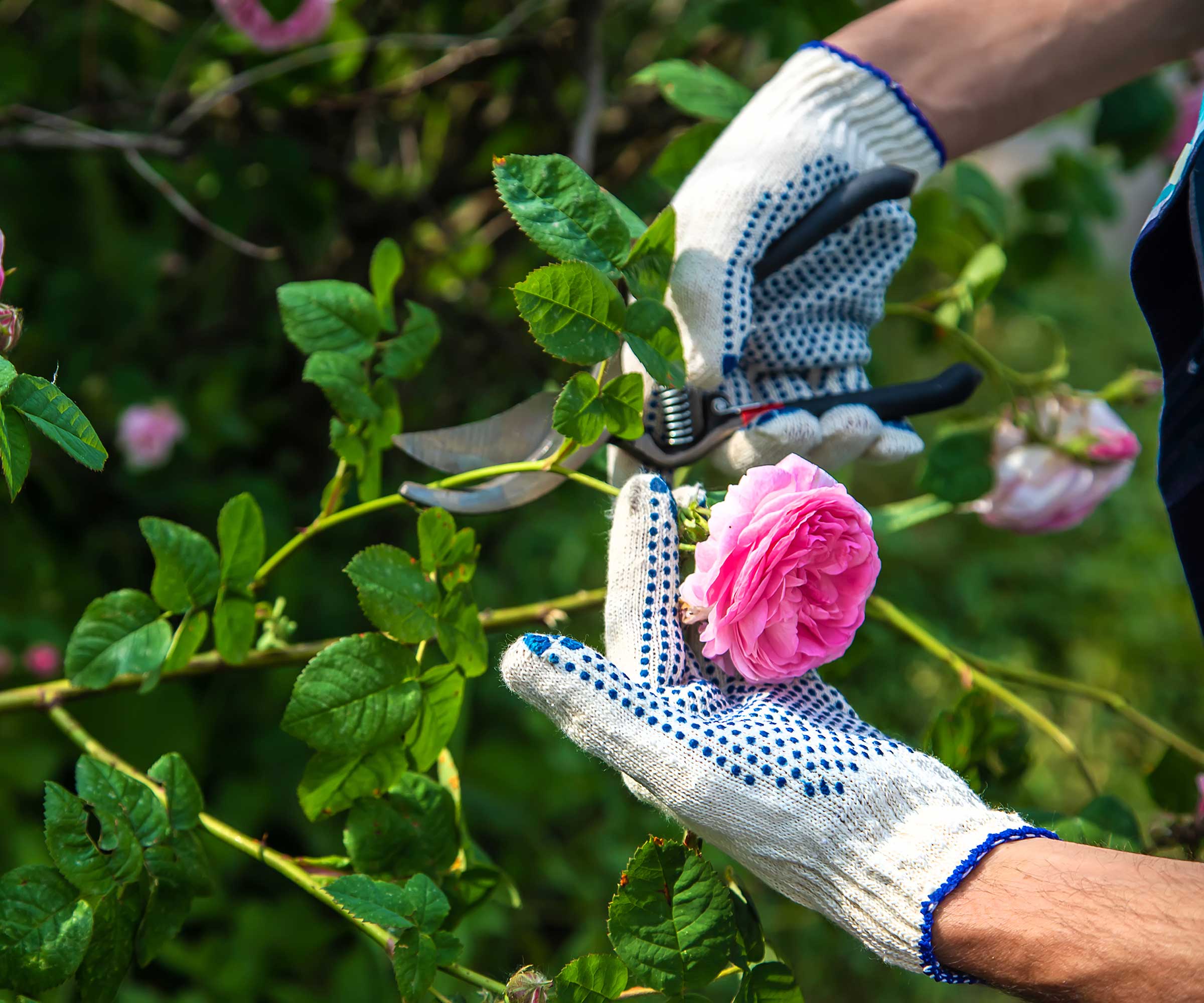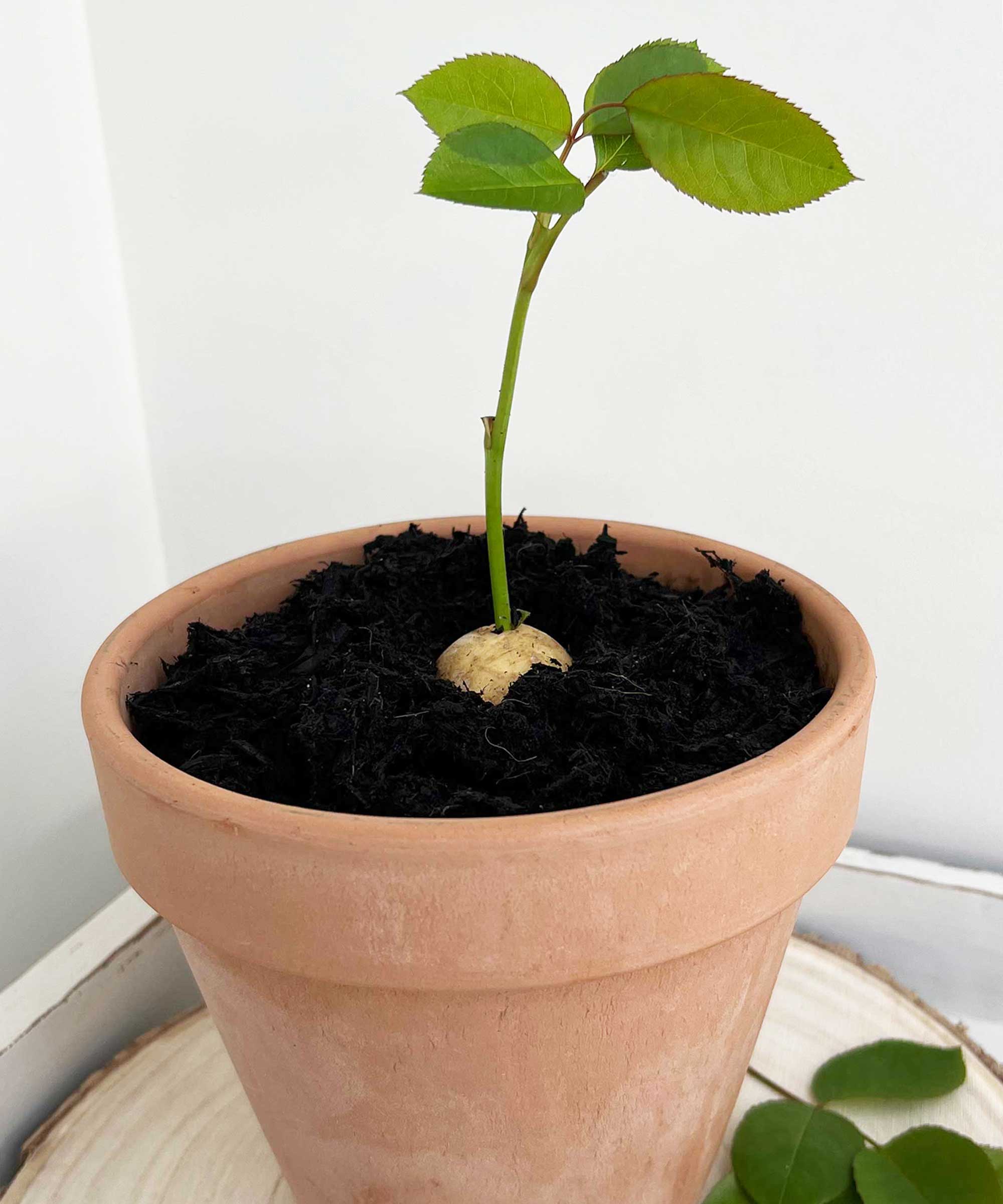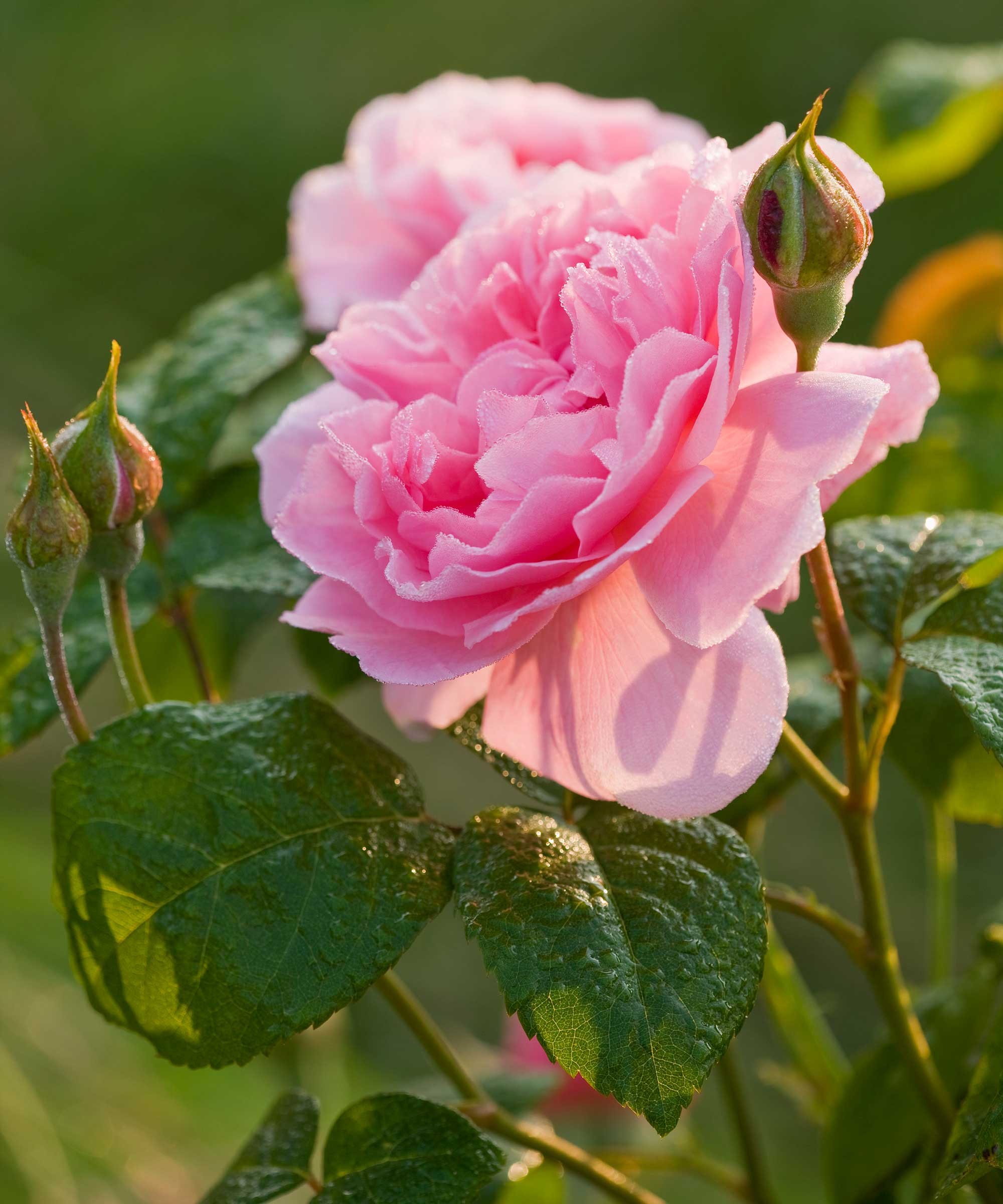How to grow rose cuttings in potatoes – an intriguing trick that’s sweeping social media
Try propagating roses and growing new plants for free with this unconventional method


The idea of growing rose cuttings in potatoes has been around for a while now, cropping up on blog posts and social media as an easy and budget-friendly trick. Growing new rose bushes for free is tempting for most gardeners, myself included. So, it's no surprise that many people are giving it a go.
The potatoes, apparently, help to keep rose cuttings moist and feed them with nutrients as they develop new roots. And the process is super simple. But how do you do it, and does it actually deliver on its promise? I decided to investigate.

Propagating roses can give you more plants for free
Does propagating roses in potatoes work?
While planting rose cuttings in potatoes has certainly piqued social media's interest, there seems to be mixed results with this technique. In fact, by scouring the comments on a recent 'potato-rose' post from Noah Young (a homesteader and YouTuber from Nebraska), the general consensus is that you're more likely to be rewarded with potato plants rather than the intended roses. Either that, or you might have no growing success at all – instead, just a bad smell as the potato decomposes.
However, if you have a potato going spare, and you're already growing roses that you can take clippings from, what's the harm in giving it a go? Half the fun of gardening is experimenting, and you never know, you might be surprised by a successful result.

It's easy to try this trick at home
How to propagate roses in potatoes
Bryan Clayton, a garden and landscaping expert, shares his method below. Although he has tried it, he warns that success is not guaranteed.
- 'Select a healthy rose stem, ideally about nine inches long, and cut the base at a 45-degree angle,' Bryan says. 'This promotes water uptake and root formation.' Remember to wear gardening gloves to protect your hands from the spiky thorns.
- 'Dip the cutting in a rooting hormone. This step is optional, but it significantly improves the success rate,' he says. A well-rated example is Bonide Bontone II Rooting Powder, available from Amazon. Some other gardening experts, Noah included, dip the end in honey instead, which is thought to be a natural root stimulant.
- 'Make a hole in a potato using a clean screwdriver or similar tool,' continues Bryan. 'The hole should be just wide enough to snugly fit the cutting.' Avoid making the hole through the entire length of the potato.
- 'Insert the cutting into the potato,' he says. 'Then, plant the potato with the cutting in a pot or directly in your garden.' Cover all of the potato with the compost. 'Make sure the top third of the cutting is above the soil surface,' he adds.
- 'Water it well, and keep the soil moderately moist until you notice new growth.'
'Overwatering can cause the potato and the cutting to rot, so careful monitoring is required,' warns Tony O'Neill, a gardening expert. 'Also, while a potato can enhance root development, it doesn't replace the importance of well-drained soil and a sunny, protected location.'

Tony O'Neill is an accomplished gardening expert, author, and educator. With a passion for simplifying gardening practices, he has inspired a wide audience through his popular YouTube channel and website SimplifyGardening.com. Tony's expertise empowers individuals to cultivate thriving gardens and connect with nature.
You could also apply gardening expert John Negus' tips for propagating roses to increase your chances of success. If the cuttings take root, he suggests pinching out the shoot tips once they have developed 4-5in of new growth. This will encourage the plants to bush out.
Design expertise in your inbox – from inspiring decorating ideas and beautiful celebrity homes to practical gardening advice and shopping round-ups.
If you're starting your potato roses in a pot, work beneficial mycorrhiza, such as Mycorrhizal Inoculant by Dynomyco from Amazon, into the hole when you go to plant them in the garden to encourage a robust root system, he adds.
Top tip: As the Royal Horticultural Society explains, it's worth noting that some roses are protected by Plant Breeders’ Rights. This means that you are not allowed to propagate them for sale.

John has been a garden journalist for over 50 years and regularly answers readers' questions in Amateur Gardening magazine. He has also written four books and has delivered many talks over the years on horticulture.

Roses are a well-loved summer bloomer
It's not just potatoes – you may have seen rose cuttings being planted into onions and even bananas across the web, too. But, what with the unpredictable results, it's best to stick to traditional methods, like rooting rose cuttings in water, if you want to play it safe. That means, keeping fruit and veggies out of the equation.

Holly started writing about gardening five years ago, and she is a regular contributor to Homes & Gardens. She has also written many gardening features for Woman & Home and Real Homes, too. She has previous experience as a professional gardener, where she helped to plant and maintain private gardens. Holly has also looked after allotment plots over the years and loves to grow her own flowers and veggies from seed. In her spare time, she enjoys visiting local gardens, botanical drawing, and tending to her ever-growing collection of houseplants.